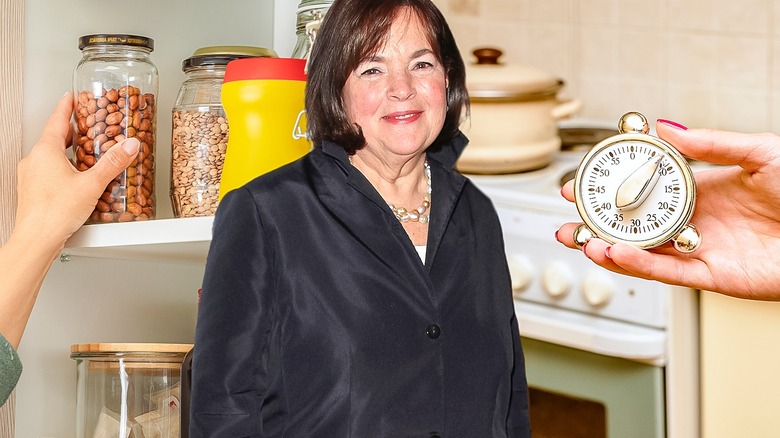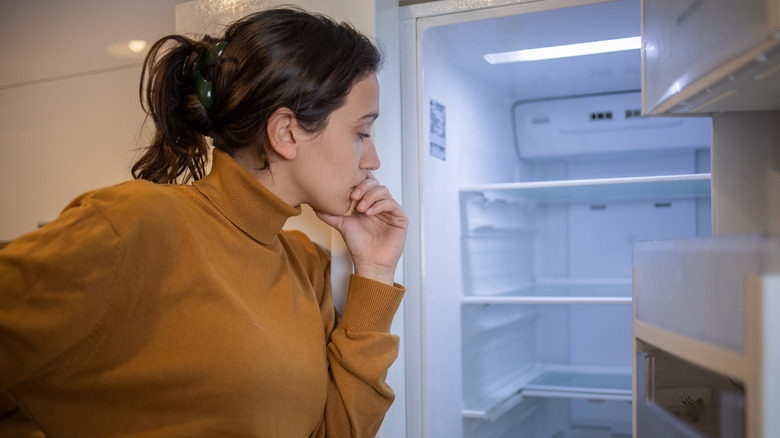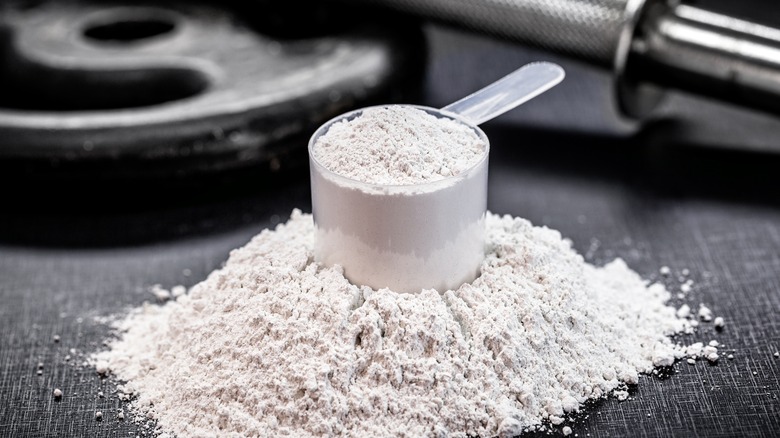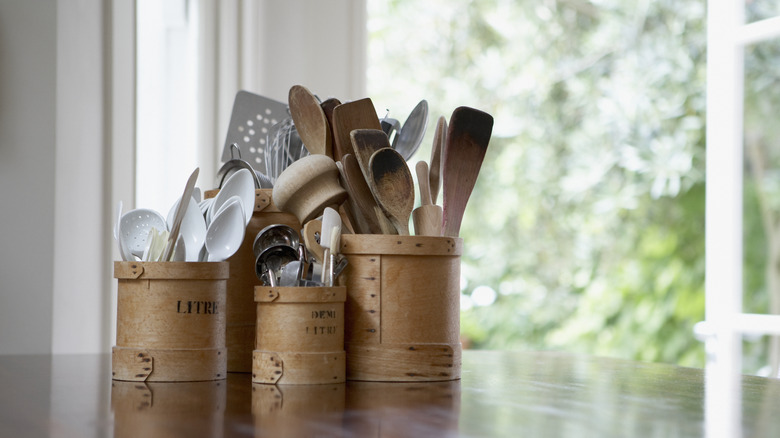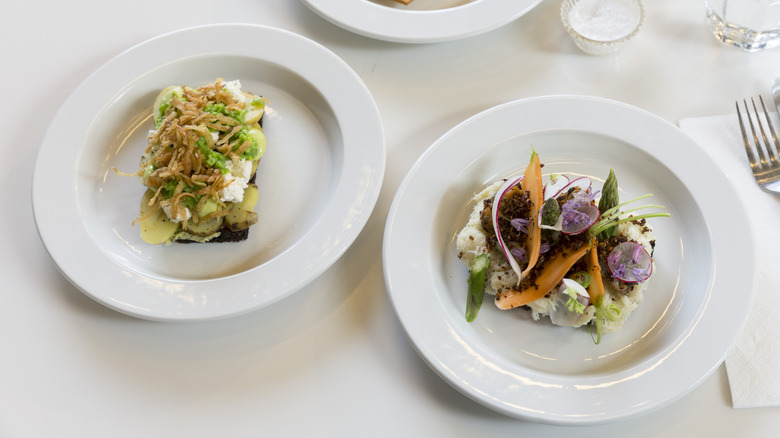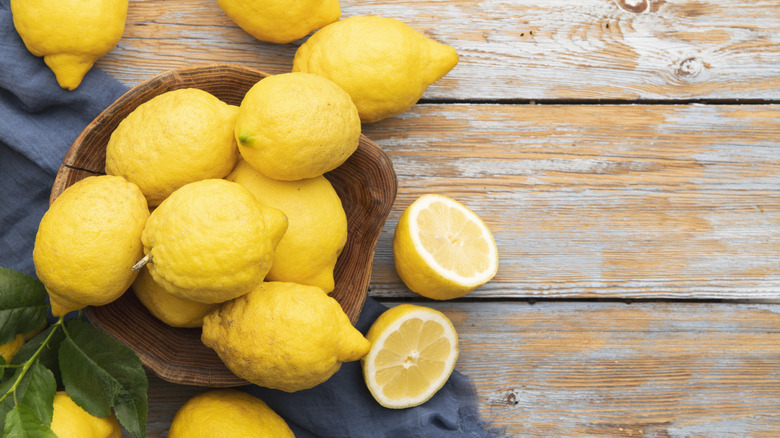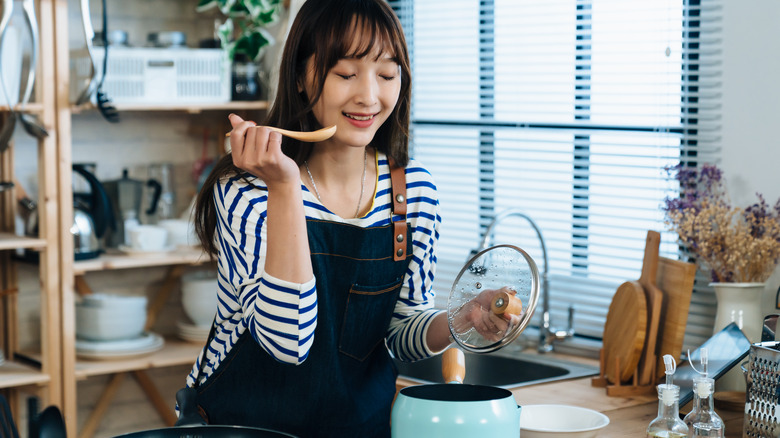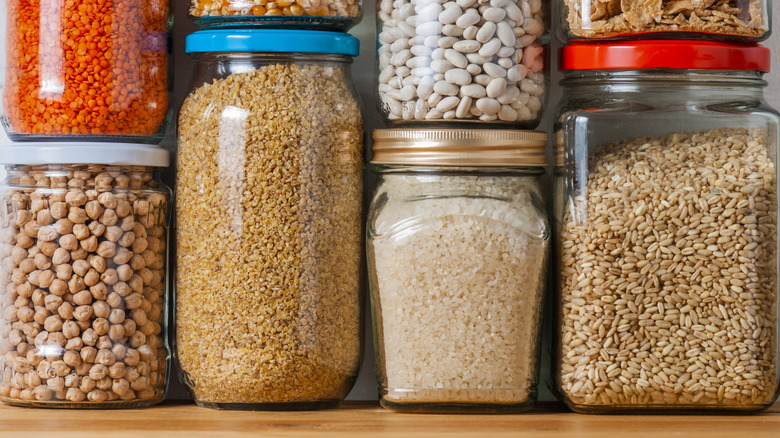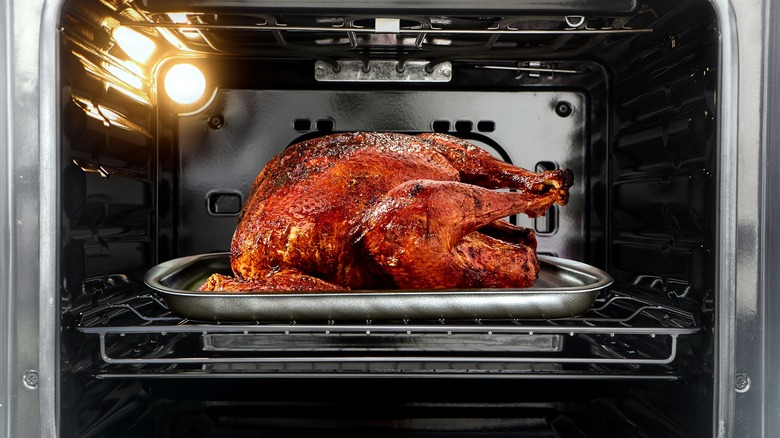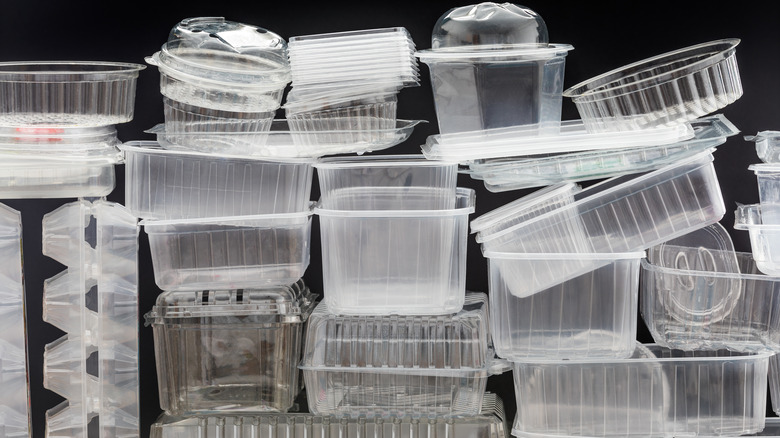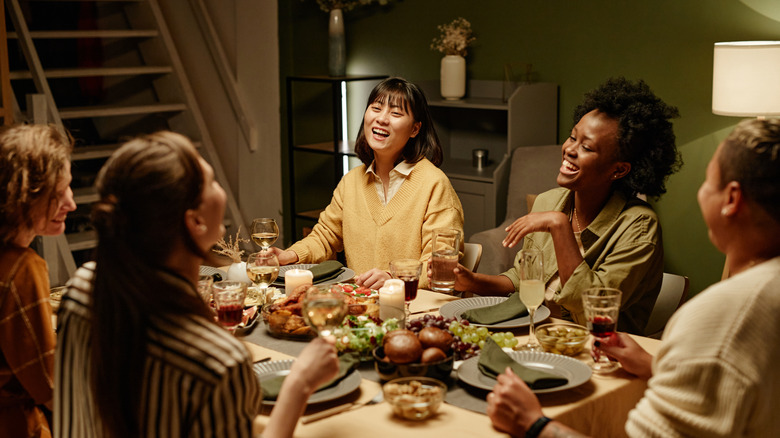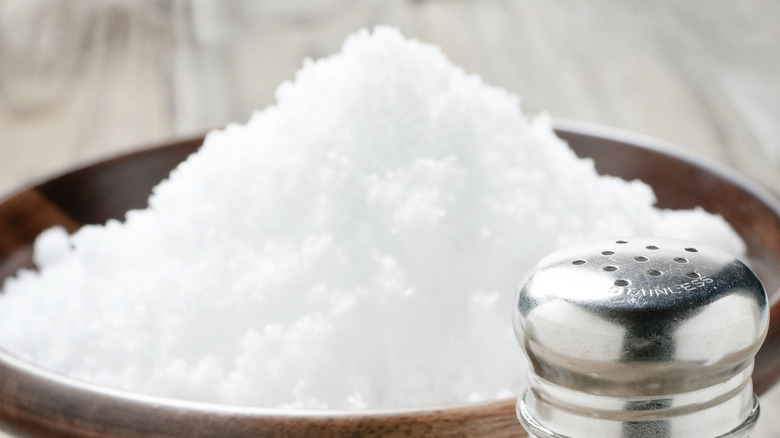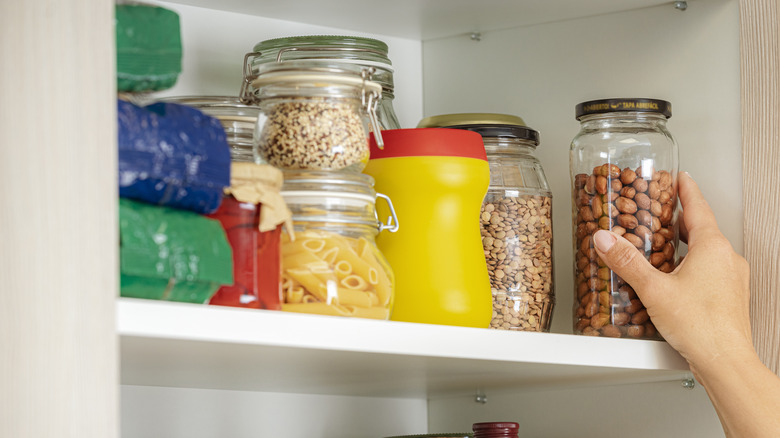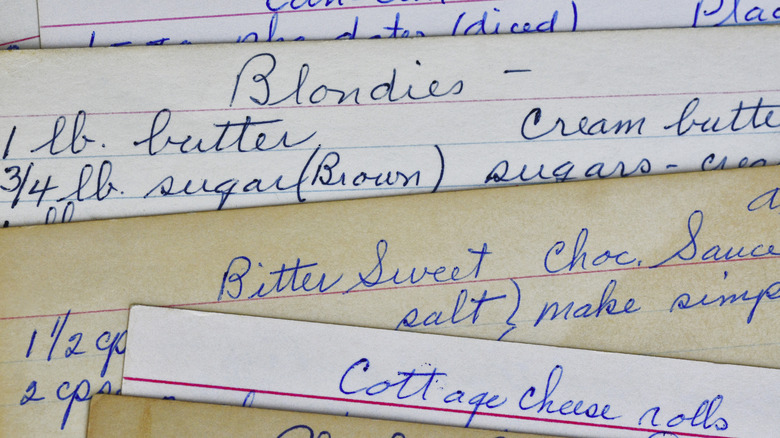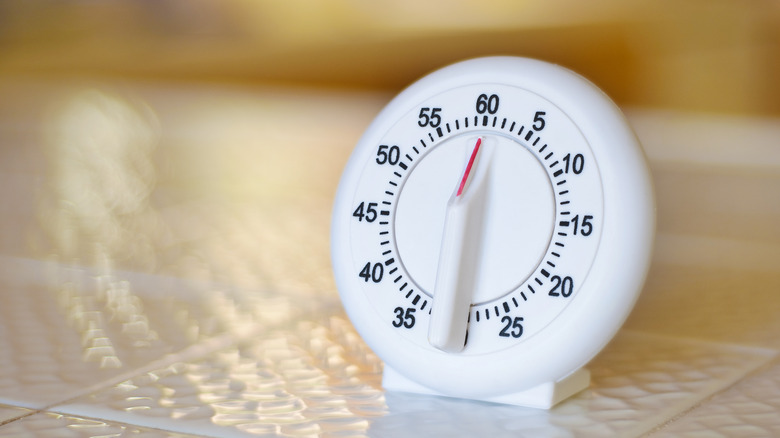Ina Garten's 14 Best Tips For Organizing Your Kitchen
Ina Garten seems to have done it all. She ran a successful business in the Hamptons for many years, has starred in a number of popular cooking shows, and wrote an array of bestselling cookbooks. She also seems to have established herself as the ultimate go-to person for entertaining guests and keeping a well-organized kitchen. With her warm personality, obvious love of cooking, and keen eye for detail, Garten has earned the trust of culinary enthusiasts everywhere, many of whom now look to her for help in everything kitchen-related, including how to keep food fresh, make homemade cocktails, and even organize their space.
And this is exactly why we turn to her today — because of her knack for making kitchens more efficient and organized. If you find cooking stressful, chances are that your kitchen has not been set up for streamlining the process. Garten can help with that. Her talent for running a kitchen isn't just about keeping cabinets neat and pantries stocked. It's about creating an environment where creativity can flourish, and where everything you need is always within easy reach. So whether you've been toiling away at the stove for years, or you've just started giving culinary arts a go, her advice on kitchen organization will pave the way to a more enjoyable cooking experience, as well as stress-free entertaining.
Create designated fridge compartments
The inside of a fridge is not a place to hide your mess. It's best to avoid shoving ingredients around in there, hoping against hope that you'll remember where everything is — or that it's even there at all. Rather, the fridge should be kept just as organized as any visible place in your kitchen. This is not just an aesthetic matter. This will help you find everything you need exactly when you need it. It may also prevent you from buying ingredients you already have because you left them in some forgotten corner of the fridge.
That is all very well and good, but what is Ina Garten's method for organizing the fridge? Her solution, which comes from her experience as a shop owner, is to compartmentalize everything by category. Keep your milk, butter, and yogurt in the same section, while vegetables can share a specific drawer. There is no mystery to this method, really. After all, this categorization is what helps you find what you need at the grocery store, a place where thousands of different people with varying requirements are able to find their goods every day. If it works there, then why not at home, too?
Prepare your ingredients before cooking
The first step in preparing a dish should never be to reach for the pan to put it on the fire. Before you get to that stage, you must make sure that everything is lined up and ready to go at the drop of a hat. If you've ever burnt the oil or butter in a pan after miscalculating how long it would take you to dice up those onions, then you know what we're talking about.
To avoid the pressure of chopping up vegetables quickly (potentially hurting yourself in the process), calmly prepare your ingredients well before the heat gets turned on. This means cleaning your items, pre-measuring them, chopping them if necessary, and otherwise getting them completely ready for their big moment in the pan. This Ina Garten tip is for anyone who's forgotten ingredients. By pre-measuring your recipe items in advance, you'll know well ahead of time whether you're missing anything and need to pop back to the store.
A good way to think about this process is to consider Ina Garten's cooking shows. Almost every time she adds an ingredient, it comes out of a cute little glass bowl, or some such container. This is not just for show. This actually makes cooking easier and less stressful.
Keep kitchen tools in multiple containers
While you're cooking, it's important to be able to reach for that magical tool that can instantly fix your sticky omelet or help you flip that searing steak. Indeed, you might not know which tool you're going to need until you're in the thick of it, so it's always a good idea to have all your kitchen tools at your fingertips, just in case.
Ina Garten seems to agree, because she recommends you organize your cooking utensils in two crock containers placed on the counter somewhere near your stove. Why two, you might ask? It's simple. A single crock of cooking tools can be prone to overcrowding, making it harder to reach for that key utensil when you need it. Using two crocks helps you visualize more clearly where everything is. Ina Garten's double crock method for organizing kitchen tools designates one crock for wooden items, and the other for metal utensils — but you can choose any categorization method you prefer, such as dividing utensils between oven use and stovetop use, or use multiple containers for relevant tools required for different types of recipes.
Use simple plates
After you've spent all day in the kitchen cooking for your guests, it's only natural that you should want them to take notice of the food you prepared. An overly ornate pattern on your plates might take attention away from your carefully constructed meal. As such, Ina Garten suggests using simple plates to serve your dishes. A nice, plain, white plate won't draw attention to itself, and might even exalt the colors and textures in the food.
Indeed, you may have noticed that many of the pictures on Garten's Instagram and website feature food on a plain white plate or a baking dish. This is because she wants our collective eye to be drawn to that bright pop of red from a radish, or the silky texture of a beautiful gazpacho soup. This can be replicated at home. Just set your table with plain, white plates — they don't have to be fine bone china — and your guests will be automatically impressed.
Keep lemons within reach
Keeping your kitchen organized isn't just about putting your cupboards in order and knowing where all your pots and pans go. It also means setting aside a place for certain ingredients out in the open, whether that's on your counter, on an open shelf, or even on your kitchen table. Luckily, lemons — which are both pretty and functional — are the foodstuff we have in mind for this particular tip.
Ina Garten loves to use lemons and other citrus fruits in many of her recipes. Consider, for instance, her skillet-roasted lemon chicken recipe. Thus, keeping lemons out on the counter not only provides a pop of color in your decor, but also serves as a reminder of the many options for a delicious meal you could cook tonight. In fact, lemon can be used in numerous dishes, both savory and sweet. You could squeeze some into your chicken noodle soup, or make some lemon bars. You might just forget about all of these possibilities if you hide your lemons away, which would be a shame.
Keep tasting spoons by the stove
Any careful chef knows that it's important to taste your food as you go through the cooking process. You want to make sure there is salt, but not too much or too little. Perhaps you want to adjust the acidity level of a dish by adding sugar, but without turning it into something sweet. Or maybe you're trying a new recipe and you're unsure how it will turn out.
All of these scenarios and many others require tasting your creation, but it might be a bit uncouth to slurp up your soup, pasta, or whatnot directly from the wooden spoon you're cooking it with. Instead, Ina Garten keeps dedicated tasting spoons by the stove. That way, every time you add a new ingredient to your pot, you can reach for that handy implement and easily scoop up a bit of your concoction to see if it needs more rosemary.
Store food in glass jars
Glass jars are one of those special kitchen items that can fulfill a useful purpose while adding to your decor. A set of simple glass jars, placed side by side on your open shelves, is a beautiful sight to behold, and a very trendy decorating method at the moment — though glass jars have been around for centuries.
But another great reason to adopt Ina Garten's glass-jar storage philosophy is that their transparency allows you to see what is inside them, and crucially, how much. With glass there's no more need for labels — unless you're dealing with similar-looking ingredients, like a variety of flours — and you'll always be able to know instantly whether you need to head to the store for more fusilli, just by glancing at your shelf. Another perk is that glass jars are easy to come by in many sizes, making them ideal containers for large amounts of rice, small measures of spices, and anything in between.
Use your appliances wisely
Organizing everything in your kitchen will mean nothing if you don't know how to use it all while cooking multiple dishes at once. Ina Garten advises home chefs to plan each meal in a way that utilizes different appliances, especially when entertaining. In order to serve all of the meal components perfectly hot when it's time for a dinner party to begin, she recommends employing every single appliance at your disposal, rather than relying too much on any one of them. This typically includes the stove and oven, but there's nothing wrong with reaching for the air fryer and toaster, too.
As Garten explained to People, it's best to plan a dinner party menu so that you can have "one thing roasted in the oven (like rack of lamb), one thing cooked on the stove (sautéed cherry tomatoes) and one thing made ahead (orzo with roasted vegetables)." Spreading out the work among the appliances, together with planning ahead, ensures that every dish you serve arrives at the table at the exact temperature ideal for its consumption.
Reuse deli containers
Proper fridge organization eludes us all sometimes. Despite our best intentions, if we get home from the grocery store and we're tired, things are just going to get shoved into the refrigerator. It's only human. But there is a way to guard against things getting out of hand, and that's the use of those plastic boxes delis use to pack takeout food — these are the disposable containers Ina Garten uses over and over again.
First of all, reusing deli containers is a great way to keep your kitchen eco-friendly, so you're already winning if you adhere to this hack. Second, the organizational benefits are real. Deli containers tend to come in standard sizes, which means you can easily stack them in your fridge or freezer. Moreover, the containers' transparent material means you can usually have some idea of what's inside them, making you less likely to forget about that leftover Bolognese sauce from the other night.
Organize your dinner party seating
Dinner parties don't have to be complicated affairs when it comes to the seating arrangement. They're not weddings, after all, and you won't have to make any fancy contortions just to accommodate complicated family dynamics. But some seating forethought can be useful if you're planning on inviting people from different friend groups, or if you want to keep things a bit spicy in the conversation department.
In any case, we suggest you consider Ina Garten's secret seating hack for lively dinner parties. Her trick for keeping the conversation going throughout the evening is to seat the two chattiest guests in the middle of the table, right across from each other. This doesn't mean that the other guests should feel excluded — quite to the contrary, in fact. Keeping the chatterboxes front and center tends to help the quieter folks engage more readily in the conversation. Humans are social animals, but some of us just need a bit of a push.
Store salt in a bowl by the stove
Salt is one of those ingredients that you must always have on hand. You're probably going to need it at some point no matter what you're making, even if it's a dessert. And since salt is such a vital element in almost any cooking process, why not keep it close? Nobody wants to dig around in their cupboard looking for something so essential to a recipe that everything could fall apart without it.
Ina Garten handles this situation by keeping salt in a small bowl by the stove. This is not her only source of salt. She likely has a whole bag tucked away somewhere ready to replenish that small bowl whenever the occasion arises. It's just a way to ensure that she has easy access to salt while she's cooking. The key to this hack, though, is to keep that bowl small. Since you'll be leaving it out on your counter uncovered, to prevent it from building up moisture and starting to stick, you'll want to refill it with fresh salt often. A large open container of salt is prone to crystallizing in just a few days, leaving you with a hard substance that needs to be scraped away from the bowl. That's not convenient at all.
Regularly clean out your pantry
When the pantry is a mess, it's hard to stay on top of a recipe that may require several pantry items. Mishaps can play out in several different ways. You might be rooting around for an ingredient needed right now, only to watch your sautéed garlic burn to a crisp because you weren't fast enough with the extra oil. Or you might pull out that jar of peanut butter and find that it has expired, along with your aspirations for a peanut butter and jelly sandwich.
Ina Garten's approach to this matter is simple: regularly clean out your pantry. This means taking everything out and tossing each expired item one by one, making room for what really belongs there. It also means organizing everything so that you can find your ingredients right away. For this, you could follow Garten's fridge-organization philosophy, which espouses the compartmentalization of items. For example, keep all your baking ingredients such as sugar, flour, and baking powder in the same corner of the pantry, or give your tomato sauces and dried pasta their own dedicated space. Garten also likes to keep chocolate chips and dried beans in clear plastic containers, so that she can maintain their freshness while keeping an eye on how much is actually in there.
Keep recipes in clear plastic sleeves
If you're the type of person who needs to refer back to their recipe multiple times throughout the cooking process, which is practically everyone, then you've probably had to deal with a fair amount of splattering on your pristine recipe pages. Keeping that cookbook or recipe card close to the stove can seem like a necessity when in the middle of preparing dinner, but it's equally necessary to protect that recipe, or you might end up burying cooking steps in a gob of tomato sauce, never to be seen again.
Enter Ina Garten's clear plastic sleeve hack. Granted, this primarily works only for printouts and recipe cards, but the idea can be extended to other mediums as well. So whenever you bring out your recipe — be it your grandmother's handwritten instructions for gnocchi, that old "Joy of Cooking" copy, the printout of your colleague's bibimbap, or the Tasting Table recipe you read directly from your tablet or phone — make sure to cover it in some type of transparent substance that can withstand hot, wet splats of tomato sauce or melted chocolate.
Use multiple timers
Ina Garten admits that she is liable to put something in the oven and then forget about it, as she explained in a recent NYT Cooking video. But this is just one of the many reasons why we love her — she's so relatable! Nevertheless, forgetting something in the oven is not something she strives to do, which is why Garten relies on a bevy of timers to keep herself in check.
But why more than one? Simple. If you're baking several items at once, with each requiring a different cooking time, it's much easier to set several timers than to remember to reset the same timer and adjust the math. The same is true for when you're cooking one thing on the stove and another in the oven, or in the air fryer, or what have you. Luckily, the microwave has its own timer, as do many ovens and stovetops these days. So, you might not need to head out to the store and stock up on timers after all. Just remember to use the ones you have.
